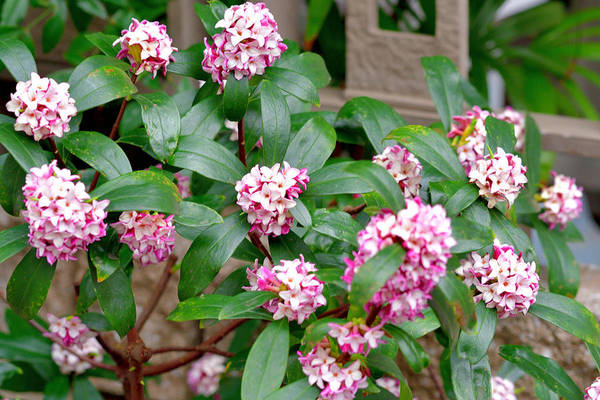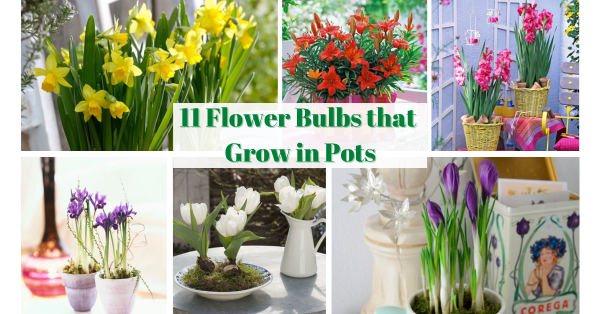21 Best Winter Season Flowers that Bloom in Winter
Embrace the Winter’s Beauty with this Guide to the Best Flowering Plants for Your Winter Garden!
Hey fellow garden enthusiasts! As the winter chill settles in, it doesn’t mean we have to bid our gardens farewell until spring. Let’s swap gardening stories by exploring the delightful world of winter season flowers – the unsung heroes that add a splash of color and cheer when everything else is feeling a bit gloomy. So, grab a warm cup of cocoa, and let’s dive into the cozy realm of winter blooms for your garden.
1. Hellebores

Botanical Name: Helleborus spp.
Known as the “Christmas Rose” or “Lenten Rose,” Hellebores are a winter gardener’s delight. These evergreen perennials produce elegant, cup-shaped flowers in various colors, including shades of white, pink, and deep purple. Hellebores are known for their ability to bloom in partial shade, making them ideal for winter garden spaces with limited sunlight.
2. Winter Jasmine

Botanical Name: Jasminum nudiflorum
Winter Jasmine is a deciduous shrub that bursts into bright yellow blossoms during the winter months. Its delicate, star-shaped flowers add a touch of warmth to the coldest days. This low-maintenance plant thrives in well-drained soil and is perfect for borders or cascading over walls.
Don’t forget to check out this curated list of Types of Pink Peony flowers!
3. Pansies

Botanical Name: Viola tricolor
Pansies are classic winter bloomers that come in a spectrum of colors, from vibrant purples to soft pastels. These hardy annuals are not only beautiful but also incredibly versatile. They can be planted in beds, borders, containers, or even used for winter bedding displays. Pansies are known for their cold tolerance, making them perfect for chilly winter climates.
4. Winter Aconite

Botanical Name: Eranthis hyemalis
For early winter blooms, consider planting Winter Aconite. These small, yellow flowers emerge as the first signs of spring approach, often poking through the snow. Winter Aconite is a bulbous perennial that naturalizes well, creating a carpet of golden blooms in late winter and early spring.
5. Witch Hazel

Botanical Name: Hamamelis spp.
Witch Hazel is a deciduous shrub that showcases its unique, spidery flowers in late winter. The flowers come in various shades, including yellow, orange, and red, depending on the species. Beyond its beauty, Witch Hazel also offers a delightful fragrance, it’s a firework show in your garden when everything else is in hibernation.
6. Cyclamen

Botanical Name: Cyclamen spp.
Known for their distinctive, butterfly-shaped flowers, Cyclamen plants thrive in the cool temperatures of winter. These perennial tubers produce a range of colors, including white, pink, and lavender. Cyclamen can be grown in containers or as ground cover, adding a touch of elegance to your winter garden.
7. Snowdrops

Botanical Name: Galanthus spp.
Imagine delicate, drooping flowers resembling tiny bells peeping through the snow – that’s the enchanting sight of Snowdrops. These early risers announce the end of winter and the promise of spring. They’re like the garden’s little messengers, spreading hope and joy when we need it most. Plant them in clusters, and let them work their magic as they multiply each year.
8. Camellias

Botanical Name: Camellia spp.
If you’re a fan of big, bold flowers, say hello to Camellias. With their glossy evergreen foliage and stunning blooms in shades of pink, red, and white, they’re the showstoppers of the winter garden. Camellia sasanqua and Camellia japonica (Japanese camellia) are some of Camellia shrubs that thrive in cool temperatures, adding a touch of glamour to your outdoor space when everything else seems to be taking a winter nap.
9. Daffodils
Botanical Name: Narcissus spp.
Ah, the heralds of spring – Daffodils are the showstoppers that bring a burst of sunshine to your winter garden. Their iconic trumpet-shaped blooms in shades of yellow and white. In USDA Zones 3-8, most daffodils are winter hardy and can bloom as early as February, depending on the region. Plant them in clusters or along pathways, and watch as these perennials create a dazzling display that lifts your spirits.
10. Mahonia

Botanical Name: Mahonia spp.
For a touch of exotic flair in your winter garden, consider Mahonia. With its spiky foliage and bright yellow clusters of flowers, it’s like a vacation for your backyard. One such variety the Winter Sun Mahonia stands out as one of the earliest flowering gems in the plant collection. With its winter blossoms and evergreen foliage, this plant becomes an indispensable asset, adding a touch of vibrancy to the winter garden. This evergreen shrub isn’t just about looks – it’s also a magnet for birds, attracting them with its berries and providing a lively backdrop to your winter sanctuary.
11. Lily of the Valley Shrub

Botanical Name: Pieris japonica
Adding to this symphony of winter beauty, the Lily of the Valley Shrub joins the ranks of these resilient bloomers. With its graceful clusters of dainty white flowers and lush greenery, the Lily of the Valley Shrub becomes a charming companion, enhancing the overall enchantment of the winter garden.
12. Winterberry

Botanical Name: Ilex verticillata
If you’re dreaming of a winter garden adorned with vibrant berries, Winterberry is your go-to shrub. With its deciduous foliage and bright red berries, it adds a festive touch to your outdoor space. Winterberry is not just visually appealing; it also provides food for birds during the colder months, creating a lively and dynamic garden environment.
13. Sweet Alyssum

Botanical Name: Lobularia maritima
Sweet Alyssum is the perfect winter companion, filling the air with a subtle honey-like fragrance. These low-growing beauties create a carpet of tiny, white, or pastel-colored flowers. In regions with little to no snow, these plants can thrive seamlessly from fall/autumn to spring. Despite the blossoms diminishing in the heat, they have the remarkable ability to self-sow, ensuring a resurgence in the fall when the weather becomes cooler.
14. Heather

Botanical Name: Calluna vulgaris
For a touch of rustic charm, introduce Heather to your winter garden. With its feathery foliage and tiny, bell-shaped flowers in shades of pink, purple, and white, Heather adds a cozy, cottage-like feel to your outdoor space. It’s not just pretty; it’s also a hardy evergreen, standing strong against winter winds and frost.
15. Winter Honeysuckle

Botanical Name: Lonicera fragrantissima
For a fragrant addition to your winter garden, Winter Honeysuckle is a game-changer. This deciduous shrub boasts clusters of small, creamy-white flowers that release a sweet, honeysuckle scent, transforming your outdoor space into a fragrant paradise. Plant it near windows or entryways to enjoy its delightful aroma, and let it be a beacon of fragrance in the winter breeze.
16. Primrose

Botanical Name: Primula vulgaris
Now, let’s talk about the unsung heroes of the winter flower crew – Primroses. These little wonders aren’t just waiting for spring; they’re here to brighten up the winter scene. Primroses come in an array of colors, like they’ve raided the paint aisle and decided, “Why settle for one?” From soft pastels to bold hues, these blooms bring a lively palette to your winter garden. It’s like having your own personal flower show, right when you need it most. Primroses are out there, early birds stealing the show. They’re like the overachievers of the winter garden, adding splashes of color long before the spring party kicks in.
17. Glory of the Snow

Botanical Name: Scilla luciliae
As the name suggests, these little blooms bring a burst of color like confetti on a snowy day. With their star-shaped petals in shades of blue and pink, they’re like nature’s way of saying, “Winter, you can’t dull our shine!” Plant them, and watch as they paint your garden with vibrant hues, creating a mesmerizing winter tapestry.
18. Crocus

Botanical Name: Crocus spp.
Don’t let their size fool you – Crocuses are the pint-sized powerhouse of winter flowers. Bursting through frosty soil, these little blooms, in shades of purple, yellow, and white, herald the end of winter blues. Their delicate petals unfurl like whispers of spring, adding a pop of cheer to the chilly landscape. Plant them in clusters, and voilà – an instant winter garden wonderland, where each tiny flower tells a story of resilience and hope.
19. Daphne

Botanical Name: Daphne odora
In the winter flower orchestra, Daphne odora takes center stage with its exquisite fragrance. Commonly known as Winter Daphne, this evergreen shrub unleashes clusters of pink or white blossoms that perfume the air, transforming your garden into a scented sanctuary. Blooming in late winter, its flowers are not just a treat for the eyes but also a feast for the senses. Plant Daphne, and let its aromatic charm enchant your winter landscape with a touch of floral magic.
20. Winter-flowering Cherry

Botanical Name: Prunus x subhirtella ‘Autumnalis’
Cherry blossoms aren’t just for spring – enter the Winter-flowering Cherry. This deciduous tree graces your garden with delicate pink or white blossoms during the winter months from late fall to early spring. Imagine the joy of having cherry blossoms in your garden while other trees are still in their dormant state. It’s like having a piece of spring in the midst of winter’s grasp.
21. Wintersweet

Botanical Name: Chimonanthus praecox
Let’s wrap up our winter flower fiesta with Wintersweet – a deciduous shrub that takes winter fragrance to a whole new level. Its pale yellow, waxy blooms release a sweet, spicy perfume that’s reminiscent of sunny days even in the coldest months. Plant it near a pathway, and let its delightful scent welcome you home during winter stroll.
Conclusion
While winter may seem like a time of dormancy in the garden, these flowering plants prove that there’s still much beauty to be found in the colder months. By incorporating these resilient and captivating winter bloomers into your garden, you can transform your outdoor space into a vibrant haven even when the days are short and the temperatures drop. Embrace the unique charm of winter season flowers, and let your garden continue to thrive throughout the coldest season.





